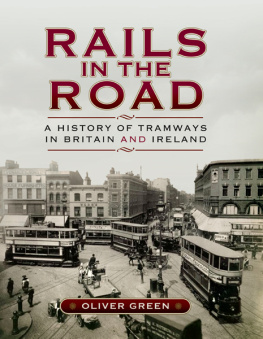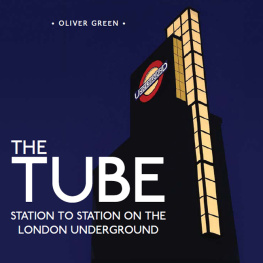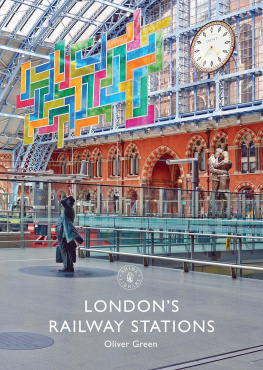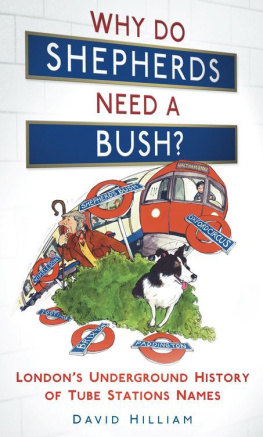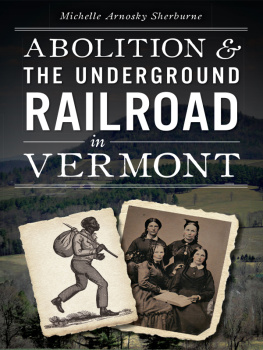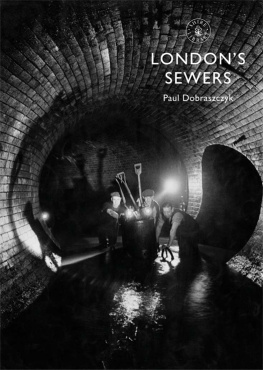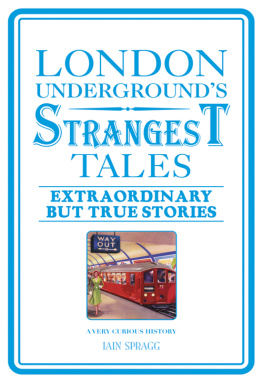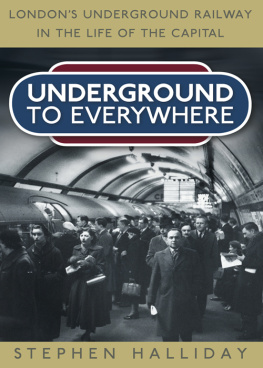Oliver Green - Londons Underground
Here you can read online Oliver Green - Londons Underground full text of the book (entire story) in english for free. Download pdf and epub, get meaning, cover and reviews about this ebook. year: 2019, publisher: White Lion Publishing, genre: Non-fiction. Description of the work, (preface) as well as reviews are available. Best literature library LitArk.com created for fans of good reading and offers a wide selection of genres:
Romance novel
Science fiction
Adventure
Detective
Science
History
Home and family
Prose
Art
Politics
Computer
Non-fiction
Religion
Business
Children
Humor
Choose a favorite category and find really read worthwhile books. Enjoy immersion in the world of imagination, feel the emotions of the characters or learn something new for yourself, make an fascinating discovery.

- Book:Londons Underground
- Author:
- Publisher:White Lion Publishing
- Genre:
- Year:2019
- Rating:5 / 5
- Favourites:Add to favourites
- Your mark:
- 100
- 1
- 2
- 3
- 4
- 5
Londons Underground: summary, description and annotation
We offer to read an annotation, description, summary or preface (depends on what the author of the book "Londons Underground" wrote himself). If you haven't found the necessary information about the book — write in the comments, we will try to find it.
Londons Underground — read online for free the complete book (whole text) full work
Below is the text of the book, divided by pages. System saving the place of the last page read, allows you to conveniently read the book "Londons Underground" online for free, without having to search again every time where you left off. Put a bookmark, and you can go to the page where you finished reading at any time.
Font size:
Interval:
Bookmark:
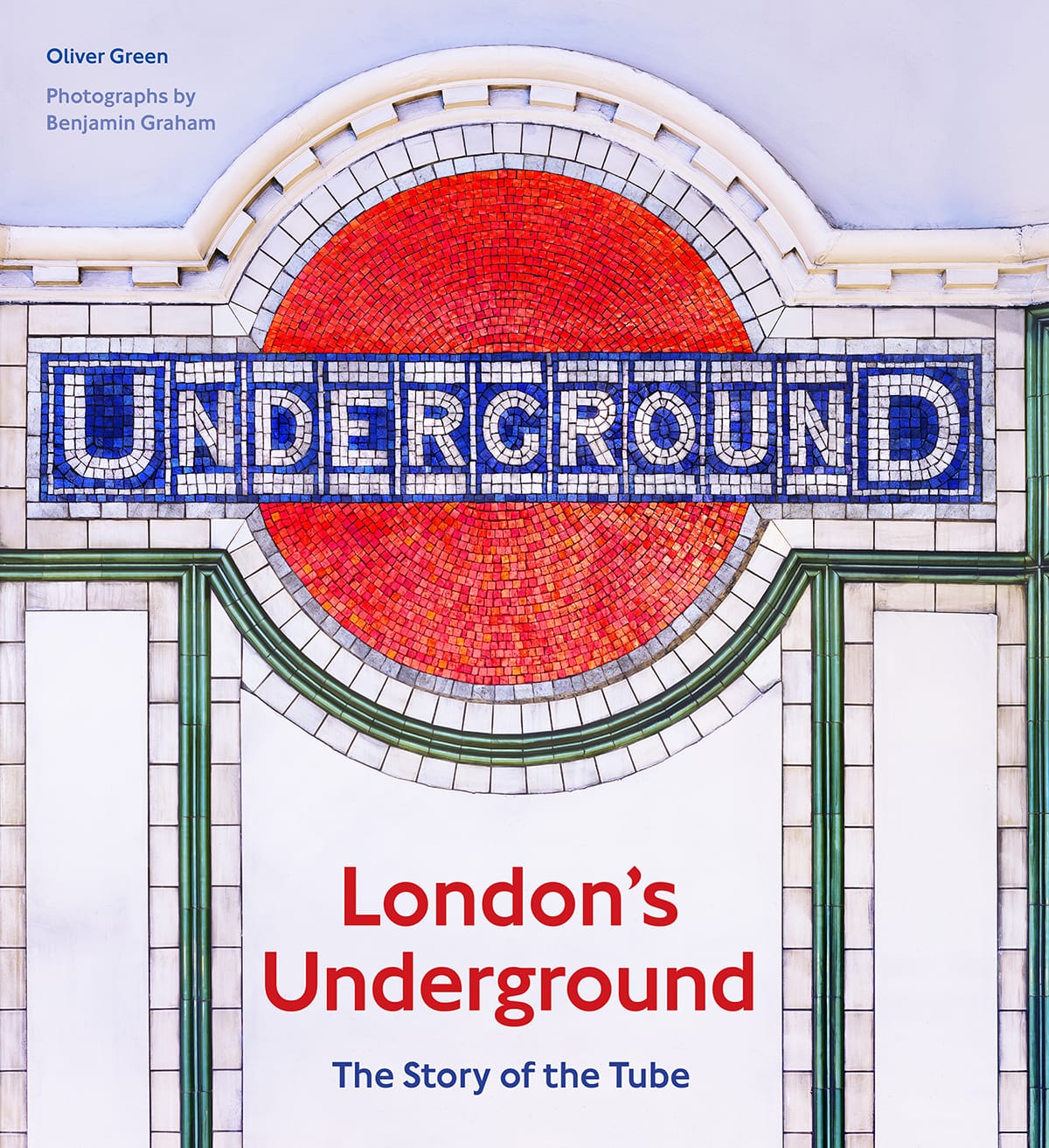

A Tube train reflected in the platform tiling at Marble Arch station on the Central line, 2018. This is on the original Twopenny Tube, opened in 1900 and fully refurbished in the 1980s.
The Story of the Tube
Oliver Green
Photographs by Benjamin Graham



Station subway entrance at Oxford Circus, 2018, clearly flagged by the Underground roundel. The Tube logo, now more than a century old, not only signifies a station, but has become a symbol of London itself which is recognised internationally.
The London Underground, now popularly known as the Tube, has its origins in the Metropolitan Railway, which opened in January 1863. It was the original urban metro, the first passenger-carrying underground railway in the world. The Metropolitan Railway originally used steam locomotives to pull gas-lit wooden carriages over a 6 km (3.75 miles) sub-surface route between Paddington and Farringdon, now part of London Undergrounds Circle, Hammersmith & City and Metropolitan lines. Much of the hardy Victorian infrastructure survives in everyday use.
Construction of this original line took less than three years and the working railway proved an immediate success with passengers. In the first year of operation, 9.5 million journeys were made on this short subterranean railway. The Times newspaper, which had referred to the Metropolitan Railway sceptically as a bold but hazardous proposition, was soon referring to it as the great engineering triumph of the day.
London was then the greatest city in the world, with a rapidly growing population of more than 3 million people. Travelling up to the metropolis from every part of the country had been revolutionized over the previous twenty-five years. The capital already had nine main-line termini for trains arriving from every direction, and more were planned. However, most of the stations were some distance from the city centre and they were not connected.
The Metropolitan Railway was a novel attempt to solve a slightly different transport problem: how to get around or across the congested city quickly and conveniently. At the Parliamentary Select Committee on Metropolitan Communications in 1855, one witness who gave evidence complained that it took longer to get across town, navigating the crowded streets from London Bridge to Paddington, than it did to travel up to London by train from Brighton.
Some might argue that the situation has not improved much, but the growth and development of Londons underground railway system over more than 150 years have been phenomenal, and it is now impossible to imagine life in the city without access to its rapid transit below the surface. From the original seven stations, the London Underground has expanded to serve 270 stations across Greater London and is closely integrated with other rail-based modes of transport in the city region, complementing the Docklands Light Railway, London Trams, London Overground, Crossrail (the Elizabeth line) and a vast network of suburban rail lines.
Today, there are eleven electric Underground lines, each identified by their own colour on the official Tube map. The tracks cover 402 km (250 miles), thus making London Underground the third longest metro system in the world and the largest in Europe. In the twenty-first century, the network carries record numbers of passengers, with up to 1.4 billion passenger journeys made each year, more than the total for the entire national rail network.

Green Park became the first deep Tube station in central London to have unrestricted street-to-train access in 2011. Beyond these steps on the south side of Piccadilly is a ramped entrance from the park and lift access from the street to the booking hall from an elegant Portland stone lift canopy designed by Acanthus Architects. The entrance building incorporates Sea Strata, fossil carvings commissioned by Art on the Underground from artist John Maine. It was all completed for the 2012 London Olympics and Paralympics, a great recent example of stylish and practical applied art and design on London Underground.
The population of Greater London has increased to more than 8 million, and the use of the Underground system has grown rapidly too, as more people travel greater distances into London to work, for leisure or to visit from overseas. London is now a world city, an international metropolis that everyone wants to experience, and nearly all of those travellers use the Tube as part of their journey.
It is no exaggeration to describe the Underground as the lifeblood of the city. Over a period of more than 150 years, its look, design and engineering have become a unique part of Londons character. As the system developed, steam trains gave way to electric power, deep Tubes succeeded shallow covered cuttings, and lifts and escalators were installed for vertical transit all innovations that we now take for granted. Before long, the Tube had its own distinctive typeface, devised in 1916 by calligrapher Edward Johnston, who also developed the famous bar-and-circle symbol. Later, in 1933, came Harry Becks brilliant diagrammatic map, based on electrical circuit diagrams, which wildly distorted Londons geography but made Underground travel far less daunting. Even seventy-five years ago, this carefully devised travel aid made using the Tube simple and straightforward in a way that the New York Subway and the Paris Mtro are not.
Between the wars, a complete corporate identity and a consistent design style covering everything from trains and station environments to communication systems evolved, led by London Undergrounds inspired managing director Frank Pick and consulting architect Charles Holden. Their distinctive London look, which became unique to the Tube in the 1930s, was further developed and adapted in the post-war years, although innovation and spending were constrained by austerity. New technology was applied sparingly, for example on the computer-controlled Victoria line in 1968 and later with the high-tech design style of the Jubilee line extension in 1999. All this makes the twenty-first-century Underground and its characterful, changing environment far more than a basic urban transit system. It represents and serves London in so many ways and has its own image and style; city life without it is almost unimaginable.

150 years of history at Gloucester Road. The Victorian station was given heritage listed status and extensively renovated in the 1980s. Art on the Underground now curates changing exhibitions along the disused platform here, seen in the background, which runs alongside the original arched retaining wall of 1868.
Font size:
Interval:
Bookmark:
Similar books «Londons Underground»
Look at similar books to Londons Underground. We have selected literature similar in name and meaning in the hope of providing readers with more options to find new, interesting, not yet read works.
Discussion, reviews of the book Londons Underground and just readers' own opinions. Leave your comments, write what you think about the work, its meaning or the main characters. Specify what exactly you liked and what you didn't like, and why you think so.

